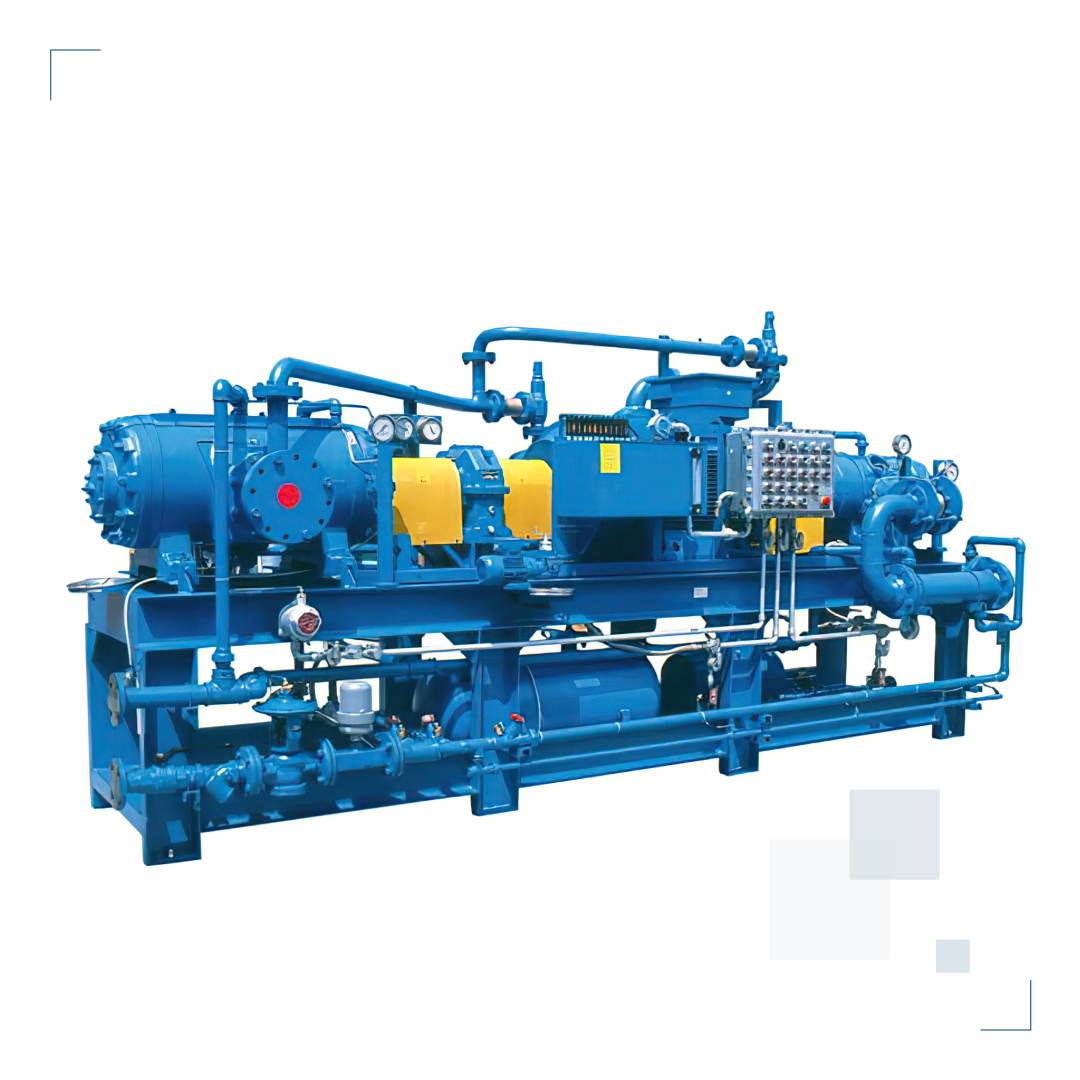A compressor is designed to compress air and other gases. The process creates a total pressure of more than 1500 mm H2O. Ship air compressors are necessary to provide the Ship’s Power Plant and the rest of the ship’s equipment with compressed air of various pressures and flow rates.
The purpose of on-board compressors.
Reciprocating compressors, both single-stage and multi-stage are most frequently found on ships and are used for:
- obtaining compressed air,
- starting diesel engines (pressure 30 bar),
- obtaining low pressure to ensure the operation of pneumatic control systems (pressure up to 10 bar),
- compression of refrigerant vapors in refrigerated installations.
In addition, the operation of the compressor is mostly aimed at:
- starting air for main engines and diesel generators (2.5-3.0 MPa), emergency diesel generator (7.0 MPa);
- the remote automated control system of the main engine;
- automatic control and monitoring system;
- pneumatic clutches for connecting the engine cooling system to the gearbox;
- controllable pitch propeller;
- ME oil filters (blowing without dismounting while the vessel is underway);
- blowing of kingstones;
- ME exhaust valves;
- charging of oxygen cylinders (15.0-20.0 MPa);
- starting cylinders of foam generators of the fire-fighting system;
Compressor classification.
According to the principle of operation, marine compressors are divided into:
- Volumetric compressors, of which the gas increase is carried out by reducing the volume of the enclosed space filled with gas. The gas in the volumetric compressors is compressed by a plunger and enters the units in compressed form.
- Vane compressors, of which the gas pressure is increased by using the inertia forces of the gas flow driven by a rotating vane device (rotor). The mechanical energy of the vane compressor’s rotor is partially transformed directly into the potential energy of the gas (pressure), and the remaining portion is transformed into kinetic energy. Potential energy is also created when the gas flow behind the compressor slows down.
 According to design features and characteristics, compressors are divided into:
According to design features and characteristics, compressors are divided into:
- Reciprocating, centrifugal, screw, axial.
- Drives by an electric motor, diesel engine, and main engine.
Compressors are divided by operating pressure: 0.8-1.2 MPa, up to 3.5 MPa, up to 6.5-7.5 MPa and above;
According to the rate of the drive motor: from 585 to 1750 min-1;
By compression steps:
- single-stage
- two-stage
- three-stage
Purpose-classified compressor types.
The compressors are divided into the following groups based on their use:
- Centrifugal compressors are driven by a turbine of exhaust gases to purge and supercharge the gas turbine.
- Axial compressors for controlling anti-roll systems on ships with a ramp, Ro-Ro vessels, multipurpose vessels, and vessels with a heavy boom carrying capacities of 150, 280, and more tons. With such control of the anti-roll system in any conditions, the roll is practically not noticeable, unlike systems with high-power vortex reversible pumps (up to 14160 l/min).
- Compressors of starting air on ships with fixed-pitch propellers. They, as a rule, are piston 2-stage up to 3.5 MPa (from 3 to 7 cylinders), with a cylinder feed of 75 m3 / hour and more. Usually, two air tanks are installed, with a capacity of 10,000 liters each.
- Compressors for the operation of the automation system. There are 2- and 3-cylinder compressors with an output pressure of 1.2 MPa or more.
- Emergency compressors, usually 1 cylinder. EDG powers its electric drive. On some vessels, the EDG is launched not only from batteries but also from an explosive charge or a special small cylinder of starting air with a pressure of 7.0 MPa. There is a special compressor for charging cylinders of this type.
- 4-stage V-shaped high-pressure compressor for refueling scuba gear (through a ceramic filter) with a pressure of up to 40.0 MPa.
What might be found on the ship?
The world fleet’s ships are more frequently equipped with two-stage and three-stage air compressors. The need to use multistage compressors is caused by how the air compression ratio in one stage should not exceed 8 (i.e., the air in the first stage, for example, can be compressed to a pressure of 0.8 MPa).
This is because when air is compressed to 0.8 MPa, its temperature rises to 170–220 °C, while the flash point of compressor lubricating oils is 250–280 °C. With a further increase in pressure, oil vapors may self-ignite, leading to an explosion and destruction of the compressor.
As a result, the air is typically compressed to 0.5–0.8 MPa in the first stage of a two-stage compressor and to 2.5–3.0 MPa in the second.
At the same time, the air flows through a special air cooler after the first stage of the compressor to approximately the initial temperature (to prevent an excessive increase in air temperature after compression in the second stage and to reduce the power costs of the compressor drive).
After the second stage of the compressor, before feeding into the cylinders, the air is also cooled (according to the Rules of the Register, the temperature of the air entering the cylinders should not exceed 40 ° C). To remove moisture and oil from the air, moisture, and oil separators are installed.
Get in touch with us.
Breezemarine Group services compressors of various types, models, and purposes. Our company provides ready-made solutions that meet your requirements. We will perform an on-board inspection, provide equipment and spare parts, replace or design, arrange the installation, and coordinate follow-up maintenance assistance.
